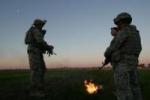Spud,
From this faraway "armchair" I'd have a look at the commentary on: http://blog.freerangeinternational.com/ and add a box on what the Afghans use as information sources now. With the caveat that literacy is low; importance of the oral tradition and non-Western ways of communicating e.g. songs.







 . It is a great product for a western engineer using the military decision making process to find a rational solution, but what does it have to do with influencing the average afghani?
. It is a great product for a western engineer using the military decision making process to find a rational solution, but what does it have to do with influencing the average afghani?




 , but by understanding, you can work it into your influence plan and have amazing results. I learned this one by dealing with Sunnis in Iraq. Their jaws dropped to the floor when I opened a very hostile engagement with this statement,
, but by understanding, you can work it into your influence plan and have amazing results. I learned this one by dealing with Sunnis in Iraq. Their jaws dropped to the floor when I opened a very hostile engagement with this statement,
Bookmarks